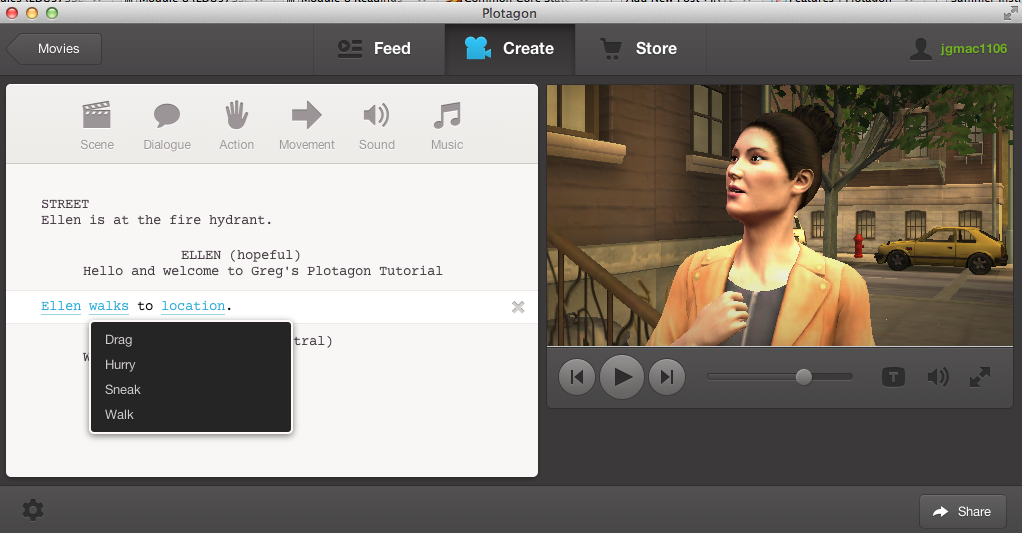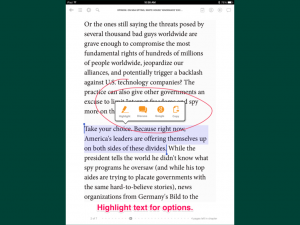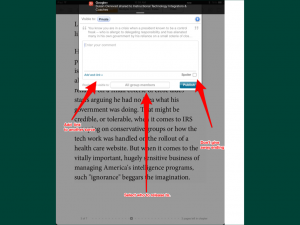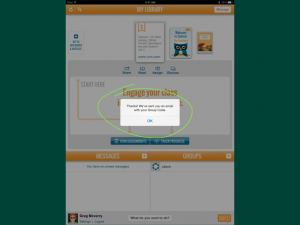Still I understand the frustration that many teachers lament. I may not support the vitriol on either side. Yet I do recognize that for some educators they feel the only recourse against well funded billions in corporate reform lies in both grassroots resistance, lazy clicktivism, and astro turfing. So to discuss this discontent I decided to mask my ideas behind some basic listicle clickbait.
Civic and Community Ready Before College and Career
Many educators do not accept the general economic push behind education reform. Noisy education reform outlets bemoan any talk of educating the “whole” child. The focus, according to accountability based edreformers, needs to be on rigor, rigor rigor. Teachers do not see the path to prosperity through increased rigor in classroom.
Teachers believe in children and the community. Real reform will take community revitalization. Real reform will require a focus on civic engagement of students. Teachers want vigor, vigor, vigor.
So when teachers see David Coleman, the architect of the CCSS, stand up and claim we need to end our focus on narrative writing because, “as you grow up in this world you realize people do not give a s**t about what you think or what you feel,” educators take note.
In fact this worldview is probably the antithesis of almost every teacher I know. We want students to have empathy for those in our community. We want students to work for a greater good. We teach students to write to engage in reflective practice. We want students to give a s**t, so much so that our kids try to change the world.
Maybe the focus of education should not be on economic outcomes. If we were to create a vision of education that stressed community and civic engagement I believe college and career would follow.
What can educators do?
We do not have to create such a bleak world vision in our classrooms. The standards have many entry points for civic engagement. Encourage students to think and explore their world.
Use the content void standards to personalize learning and allow students to develop voice and agency. While the supporting documents call for a curriculum rich in sequenced content knowledge the standards themselves avoid proscribing specific content (with the exception of Shakespeare, early American literature, and some founding documents).
No Educator Involvement in Writing the Standards
On paper the CCSS seem state driven. According to CCSS state website the National Governor’s Associations created the standard. In reality the standards were bankrolled by large corporate interest such as the Bill and Melinda Gates Foundation and written by Achieve Inc. Susan Pimentel who was an former English major; David Coleman a lawyer ; and Jason Zimba, a scientist, took the lead writing the standards as consultants.
Coleman, who spent some brief time as a high school tutor while an undergraduate, had the most educational experience of all the authors. In fact the only two educators brought in to validate the standards after they were written refused to sign off on their approval.
This pisses teachers off. Imagine a plumber rewriting standards of medical practice. Doctors would not stand for such illegitimate encroachment.
What can teachers do?
Take charge of implementation of the standards. The standards are not bad and in many cases are superior then the hodgepodge of old standards. The CCSS are supposed to be about what to teach and not how to teach. I often here that without any early childhood experts the standards are developmentally innapropriate for the K-2 classrooms. I hear educators bemoan that play gets taken out of the class.
You are wrong.
Playing with words and oral language development, especially in language and content rich classrooms, is the only way to meet the new standards in terms of early childhood education. Push back against administrators who only want the sole focus of the class to be on phonic awareness and phonics. Fight for your literacy and play centers .Yes we need explicit teaching of these skills but we also need to immerse students in language and content.
Unfunded Federal Mandate
Forty five states approved the Common Core State Standards. Many with an economic gun to the head. The Obama Administration, under Arne Duncan’s education policies created Race to the Top. In order to qualify for hundreds of millions of dollars in aid states had to adopt the standards. This “carrot” came at a time of worst economic crisis since the great depression.
Very few states won any money. All of the states were left with cost of implementing the standards. States and districts had to redirect millions to new testing. They had to cut positions and salaries to ensure adequate bandwidth. I know here in Connecticut we had just invested time and treasure to revamping our Language Arts Standards. These were immediately dropped and replaced with a hyperlink to the Common Core State Standards. Yes that is correct our standards were reduced to a hyperlink.
What can teachers do?
Vote.
Rigid Philosophical Viewpoint
Teachers, especially those trained as English or early childhood literacy teachers, take issue with underlying philosophical views that guide the Common Core State Standards. First is the viewpoint of close reading over more personalized responses to the text. Coleman once again suggested that the meaning of text only, “lies within the four corners” of the text.
Many educators and decades of reading comprehension research disagree. The close reading methods emerge from a school of thought called New Criticism. You are asked just to focus on text structure and read and reread texts to try to crack the author’s code.
The authors of the CCSS suggest such a viewpoint in order to try and equalize the amount of prior knowledge and experience diverse readers bring to a text. The idea that students can turn off background knowledge is absurd. According to Beers and Probst “Meaning is created not purely and simply from the words on the page, but from the transaction with those words that takes place in the reader’s mind (p.34).”
Another rigid viewpoint revolves around the purpose of reading. The CCSS make no mention of reading for enjoyment. The goal, according to the standards, is just to push students through more and more complex texts without much thought to the reasons of why we read.
In fact if you look through the Appendices the literacy scholars who are not cited reveal just as much as those who are cited. There is no mention of of Guthrie, Wigfield, or Gambrell. These scholars through decades of research, have demonstrated that reading motivation predicts performance on comprehension. Yet if you read the standards teachers are not to discuss reading for enjoyment.
What can teachers do?
In terms of close reading I do believe teachers were spending too much time on pre reading activities. I do not, as many CCSS advocates suggest, propose eliminating pre-reading activities. Activating background knowledge or pre teaching key vocabulary is smart practice. I just believe the majority of the time should be spent reading sources.
In terms of motivation and reading comprehension build a classroom that celebrates the written word. Do not simply abandon your better practice to constantly disssect text structures.
Conflating Standards, Assessment, and Teacher Evaluation
The simultaneous roll out of the Common Core, the development of new high stakes assessments, and teacher evaluations (all required for RTTP or NCLB waivers) is probably the greatest source of consternation for teachers.
Teachers need to know that having national standards and national assessments, in direct conflict with the constitution, has always been the goal of accountability based ed reformers.They want to shut down local school boards,the “educational sinkholes” that destroy our education, and replace them with appointed rubber stampers who will push national assessments.
I am staying away from the connection of using “poor” test scores to push for privatization of education but that is a constant undercurrent in the accountability based ed reformer mindset.Assessment
I myself do not automatically find evil in the high stakes testing. PARCC and SBAC are creating innovative measures. I just think we maybe using the assessments in the wrong way. Accountability based ed reformers are quick to hold up the NAEP assessments as the gold standard. The NAEP results are used to show the inadequacies of the American education system when compared to homogenous nations without huge income disparities.
There is a reason NAEP is the gold standard. The assessment uses best practices that CCSS assessments will not use. NAEP is not administered to every student. Instead scientific sampling methods are used that improve the reliability of results. NAEP would never try to assess every single student nor would they try to use the results to judge the contribution of individual teachers.
Teacher Evaluation
States use one of two methods to measure the contributions teachers make to student test scores. Value added models or student growth percentiles. Neither will work. In fact I envision thousands of law suits as teachers lose jobs or seniority based on bad math. You just cannot parse out the variability in scores caused by individual teachers.
Teachers are also now being judged using assessments that no one has yet seen, are untested, and are legally barred to discuss. Imagine your job being on the line and your effectiveness using a brand new workflow was judged using a test you have not seen nor can discuss. Wouldn’t you be upset?
Teachers are going to be judged on their effectiveness to teach new standards, using a new test, and methods that the statistical scientists have suggested do not work.
What can teachers do?
If student growth is going to be included in teacher evaluation models we should push for the use of district determined measures over the use of the long dreamed about national assessments. DDM’s correlate highly with state assessments and NAEP scores. You also get the results quickly and they can inform practice. So if the assessments are valid, correlate with out gold standard of assessments, and cost millions less to administer why not use them?
We also need to push for increased observations and student artifacts as part of a teacher evaluation process. The observations should be a mixed of announced and unannounced and teachers should develop their own professional development goals and connect these goals to student artifacts.



































